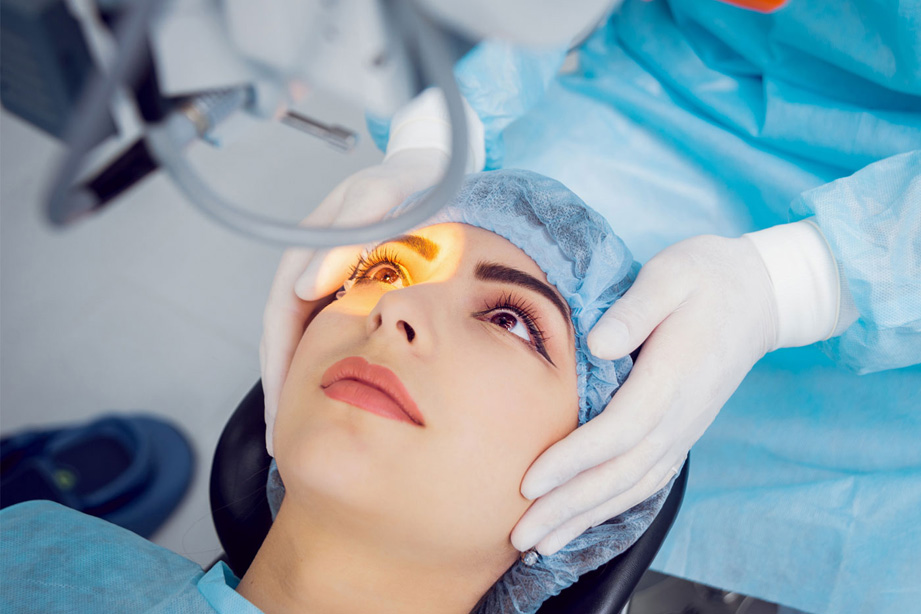Keratoplasty, Pitfalls or Success

When the cornea of the eye get diseased due to recurrent infections, ulceration, burns, chemical insults or genetic causes, the surface will lose its glitter and become cloudy, with white spots will apear on the surface that might lead to blindness
The bright side of this, it's a treatable condition by doing a keratoplasty procedure, that's a corneal transplanted from a deceased donor to replace the diseased cornea.
When Corneal Donor Bank in Jordan university hospital was established back in 1979, I was honored to be part of this project as a professor of opthalmology at the faculty of medicine, Back then, Corneal transplant or Grafting was the only treatment for visual impairment that's caused by corneal diseases here in Jordan.
Keratoconus was the most common condition that was treated by corneal transplant at that time.
The Guidlines from most international ophthalmology centres all over the world stressed on the importance of using contact lenses as a first line of management in cases of keratoconus if well tolerated by the patient.
Unfortunately, the excitement of both, physicians and patients, about the corneal transplant at that time was predominating. Hundreds of corneal transplant was done, but after a period of time, when the complications of this procedure started to appear, especially in keratoconus patients, a lot of patients had regression in their visual acquity after removal of the corneal sutures because of severe visual impairment that happen to the cornea or whats' called, Astigmatism, and the vision becomes weaker, that even corrective contact lenses won't fix it.
Despite the fact that the cornea is an avascular organ and the rate of rejection is lower compared to other organs, it still can happen. When the body rejects the corneal graft because of Host-graft immune mediated reaction, it will cause severe keratitis, and the cornea will become cloudy again, and even worse than before surgery. That's why we should always wait and think wisely before doing corneal transplant..
Corneal Transplant is preferred in cases of diseased cornea that lost its shine and started to develop white scars called corneal ulcerations. It's also chosen to treat severe cases of keratoconus that don't respond to conservative management by contact lenses or collagen cross linkage procedure, Here, Corneal transplant would be justified.
Gas permeable contact lenses is safer and has a lower cost in correction of visual impairment, and the visual acquity will become 66 without symptoms for years.
The technology of manufacturing the newer generations of contact lenses has improved lately and expanded their uses in the management of keratoconus and other ophthalmic conditions, The newer generations of contact lenses are synthesized from two different chemical materials with different physical properties, that's called "Hydrid Lenses", as the central part is solid and synthesized from a material called methyl methacrylate, and the peripheral soft part that's composed from hydroxy methyl methacrylate, which make them easier to handle and the patient can keep them for hours in the eyes without side effects or symptoms, beside of the great correction of the refractive deficit and visual impairment.
Regarding collagen cross linkage procedure of the cornea, where vitamin B12 (Riboflavin) along with topical anesthetic agent are applied to the cornea to remove the outer epithelial layer, then exposing the cornea to ultraviolet rays for a while, then cover it with soft contact lense. This procedure will change the composition and the arrangement of collagen layers of the cornea. Where in keratoconus, Multiple layers of collagen layers over each other with weak cross links between them, making it easier to slip from each other and to deform the corneal shape. With collagen cross linkage procedure, the layer of collagen will cross link to each other making it more stiff and stronger, stabilizing and holding its shape and stopping the cornea to thin, thus, preventing further regression in vision. The end result is improvement in vision after months and stronger cornea, altough visual acquity might stay the same, but it can be managed by eye glasses or contact lenses.
this procedure can be performed in pediatric age group older than 10 years, that will save years of suffering from flactuating visual impairment and its consequences on the children, socially, psychologically and its effect on their education.
Collagen cross linkage procedure can be performed after LASIK (photorefractive keratectomy) that might be complicated by stretching of the cornea and regression of visual acquity, after cross linkage procedure, the cornea will be stronger, thus improving the vision.
Corneal grafting or transplant procedure had enormous improvement lately, where in some cases, only the superficial diseased collagen layers will be replaced, keeping the deep intact layers in place, this's called DALK (Deep anterior Lamellar Keratoplasty) .
On the other hand, only the deep layers can be replaced, saving the normal superficial ones, this's called DSEK or DMEK (Descemet’s stripping endothelial keratoplasty (DSEK) and Descemet’s membrane endothelial keratoplasty (DMEK) according to the involvement of the descement layer in the repair of the endothelial layer, Thus decreasing the rate of rejection and the degrees of astigmatism, ensuring the success of the procedure and intact vision for the patient
Prof. Sura Saba Alaish
Ophthalmology Consultant






